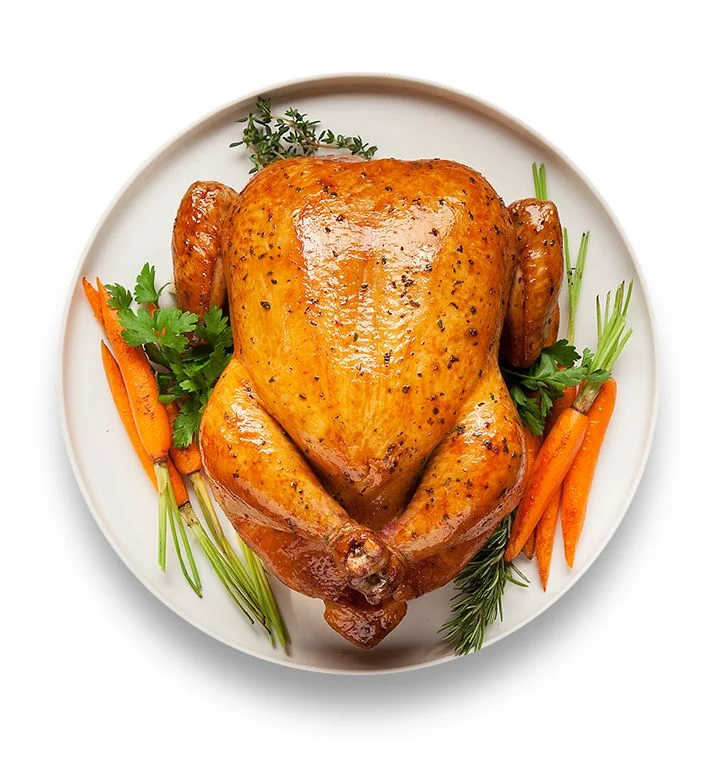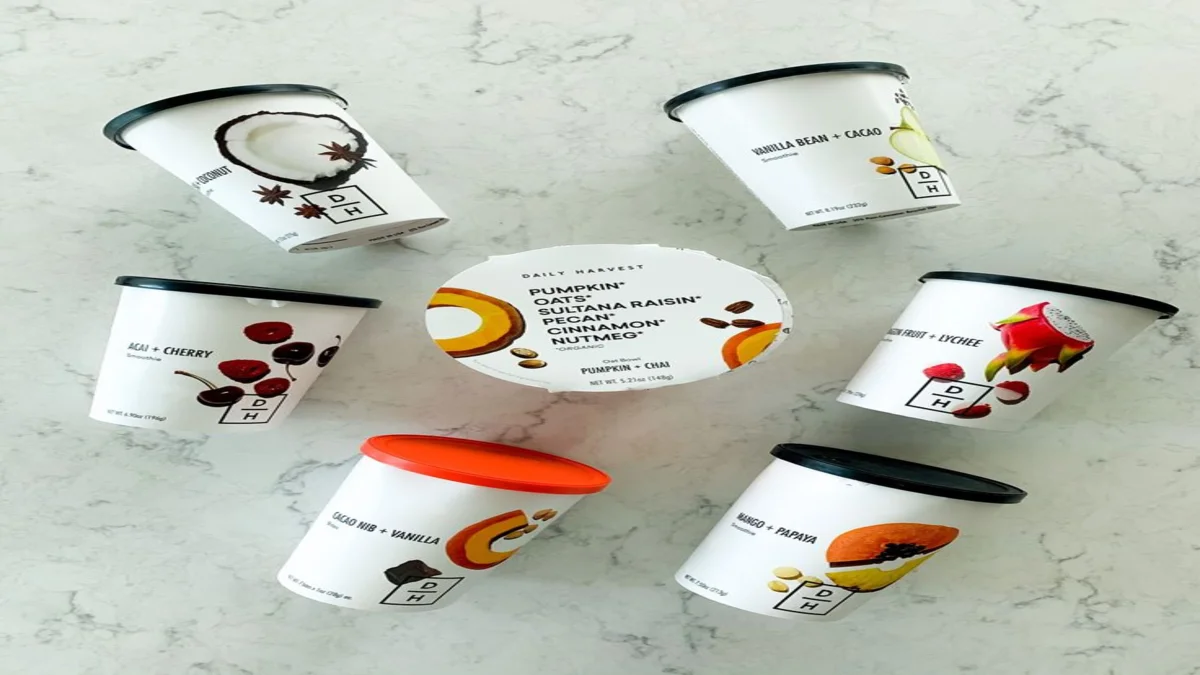Unsure about how to reheat leftovers without compromising their taste and safety? This article covers everything you need to know to enjoy your meals again.
Leftovers are a common occurrence in many households, but not everyone knows the best practices for reheating them. Improperly reheated food can lead to harmful bacteria growth, causing illness. To prevent this, it’s crucial to know the correct methods for reheating different types of leftovers.
How to Safely Reheat Leftovers?
Steak

The common issues when reheating steak include dry, rubbery, or bland meat.
Yet, some reheating techniques preserve both flavor and juiciness.
Remember, reheating leftover meat usually enhances the flavor when it’s brought to room temperature first.
So, allow it to sit outside the refrigerator for approximately 10 minutes before warming it up.
Option 1: Oven
When time allows, this method is optimal for reheating steak while maintaining its tenderness and flavor.
- Preheat your oven to 250°F (120°C).
- Position the steak on a wire rack placed within a baking tray to ensure even cooking on both sides.
- Preheat the oven before placing the steak inside to cook for approximately 20–30 minutes, with regular checks.
The cooking duration will differ based on the steak’s thickness. - The steak should reach a temperature of 100–110°F or 37–43°C at the center before being considered ready, ensuring it is warm but not extremely hot.
- Pair with either gravy or steak sauce.
Another option is to brown each side of the steak in a skillet using butter or oil to achieve a crunchy exterior.
Option 2: Microwave
The best option when time is limited. While microwaving can dry out steak, you can prevent this by following a few simple steps:
- Place the steak in a dish suitable for the microwave.
- Pour steak sauce or meat gravy on top of the steak, then drizzle a bit of oil or butter.
- Place a lid on the microwave-safe container.
- Cook over medium heat, flipping the steak every half minute until it reaches a warm temperature without getting too hot, This process should be completed within just a few minutes.
Option 3: Pan
Another quick method for reheating steak is to maintain its tender juiciness.
- Include beef broth or gravy in a deep pan.
- Warm up the broth or gravy until it reaches a simmer, being careful not to bring it to a boil.
- Afterward, include the meat and allow it to warm up completely.
- It should be ready in just a minute or two.
Option 4: Plastic bag that can be sealed again
Ideal for maintaining the juiciness and deliciousness of steak, this method doesn’t require as much time as the oven but takes slightly longer than microwaving or pan-frying.
It may not be suitable for reheating multiple steaks simultaneously.
- Put the steak in a zip-top plastic bag safe for heating without any harmful chemicals, such as BPA.
- Include your preferred ingredients and seasonings in the bag, like minced garlic and diced onions.
- Remove all air from the bag before sealing it securely.
- Position the closed bag into a simmering water-filled saucepan and warm until the meat reaches the desired temperature, typically requiring 4–8 minutes based on its thickness.
- After cooking, sear the steak quickly in the pan if desired.
Chicken and select red meats

Reheating chicken and specific red meats may result in dry and tough food.
Generally, it’s recommended to reheat meat using the same cooking method.
You can safely reheat chicken and other red meat without drying them out.
Option 1: Oven
Taking the longest time, this approach is the top choice for retaining moisture in leftover food.
- Preheat your oven to 250°F (120°C).
- Place meat on a baking sheet, then add a bit of oil or butter.
Use aluminum foil to keep it from drying out. - Typically, this process requires a minimum of 10–15 minutes, although the duration can vary based on the meat’s type and quantity.
- Ensure that the meat is thoroughly reheated before serving.
Option 2: Microwave
Microwaving meat is the fastest way to reheat it, but going beyond a few minutes often leads to food drying out.
- Put the meat in a dish suitable for the microwave.
- Add a bit of water, sauce, or oil to the meat before covering it with a microwave-safe lid.
- Cook the food evenly and thoroughly by microwaving it on medium heat for the required duration.
Option 3: Pan
While not as commonly chosen, reheating chicken and other meats on the stovetop is a viable option.
To prevent overcooking, it’s important to maintain a low heat.
If you’re lacking a microwave or are pressed for time, this method is effective.
- Include oil or butter in the pan.
- Put the meat into the pan, then cover and heat it on a medium-low heat.
- Rotate the meat during cooking to guarantee even doneness.
The process typically lasts about five minutes, varying depending on the kind and quantity of meat.
Fish

Fish can be warmed up much like meat does.
Nevertheless, the thickness of the fillet significantly affects the overall taste.
Thicker slices of fish, like salmon steaks, will preserve both texture and flavor more effectively compared to thinner cuts.
Option 1: Microwave
A convenient choice when time is limited and the fish is not coated in breadcrumbs or batter, but it’s worth noting that it may leave a pungent odor in your kitchen.
- Add a touch of water or oil to the fish before transferring it to a microwave-safe container.
- Cover the dish, heat it on low to medium power for 20–30 seconds at a time, and monitor regularly until the fish is cooked through without being overdone.
- Rotate the filet frequently to guarantee uniform warming.
Option 2: Oven
A great choice for preserving moisture and flavor, though it does demand extra time.
- Preheat your oven to 250°F (120°C).
- Wrap the fish in foil and place it on a baking tray unless it is breaded or battered.
- Cook for 15–20 minutes until the middle is piping hot.
Option 3: Pan
Fish that has been sautéed, grilled, or baked can be easily reheated by steaming or pan-heating.
To heat:
- Add oil or butter to the pan.
- Cook over medium-low heat, then incorporate the fish.
- Place a lid on the pan and periodically inspect it while turning it consistently.
To steam:
- Loosely wrap the fish in foil.
- Position the item in a steamer or on a rack above simmering water inside a lid-covered container.
- Steam for about 4 to 5 minutes until the fish is thoroughly cooked.
Rice

Rice, particularly reheated rice, poses a food poisoning risk when not handled or reheated properly.
Raw rice might harbor Bacillus cereus bacteria spores, potentially leading to food poisoning, as these resilient spores can withstand the heat during cooking.
It’s safe to warm up rice but don’t if it was left out at room temperature for too long.
Serve freshly cooked rice immediately, then chill it within an hour and store it in the refrigerator for a maximum of a few days before rewarming.
Here are some great choices for warming up rice.
Option 1: Microwave
- If pressed for time, this method offers the fastest and easiest way to warm up rice.
- Combine rice with a dash of water in a microwave-safe container.
- Break up any clumps in the rice with a fork if it sticks together.
- Place a fitting lid or damp paper towel over the dish and heat it on high until it’s thoroughly hot. Typically, this process takes around 1–2 minutes per serving.
Option 2: Pan-Steam
This choice may take a little longer than using a microwave, but it’s still quick.
- Combine the rice with a touch of water in a saucepan.
- If rice sticks together, use a fork to separate it.
- Place an appropriate lid over the pan and simmer on low heat.
- Regularly stir the rice until it is hot.
Option 3: Oven
Reheating rice in the oven is a good alternative if a microwave isn’t available, even though it may require more time.
- Place rice in a dish that is safe to put in the oven with a bit of water.
- Including butter or oil can help avoid sticking and enhance the taste.
- Separate the rice using a fork in case it clumps together.
- Place a proper lid or aluminum foil on top.
- Bake at 300°F (150°C) until heated through, typically for 15 to 20 minutes.
Pizza

Frequently, warming up pizza can lead to a wet and messy situation with cheese.
Learn the right way to reheat pizza to keep it tasty and crispy.
Option 1: Oven
This method requires the most time but ensures you receive a hot and crispy leftover pizza.
- Preheat your oven to 375°F (190°C).
- Cover a baking sheet with aluminum foil and preheat it in the oven for a few minutes.
- Place the pizza cautiously on the warm baking sheet.
- Baking for about 10 minutes, be sure to check every so often to prevent burning.
Option 2: Pan
This technique is a bit faster than baking.
When executed correctly, you’ll still achieve a crispy crust and gooey cheese on top.
- Put a non-stick pan over medium heat.
- Place the remaining pizza in the skillet and warm it for approximately two minutes.
- Add some water drops into the pan base, but avoid splashing them onto the pizza.
- Place the cover on top and warm up the pizza for an additional 2–3 minutes until the cheese has melted and the base is crispy.
Option 3: Microwave
Despite being the fastest and most convenient way to reheat pizza, your leftover slice often turns out mushy and chewy. If you opt for this method, here are some tips to enhance the outcome slightly.
- Position a paper towel between the pizza and the plate.
- Warm at medium intensity for about one minute.
Roasted Vegetables

The top broiler or grill in your oven is undoubtedly the best choice for reheating roasted vegetables, ensuring they preserve their delightful flavor and texture.
Broil or Grill
- Set the top broiler or grill to medium-high and let it warm up for a few minutes.
- Arrange the remaining vegetables on a baking sheet within a baking tray, no oil is necessary.
- Position the baking tray beneath the grill for 1–3 minutes, then flip the vegetables and repeat the process for an additional 1–3 minutes.
One-Pot Meals and Casseroles
Casseroles and one-pot meals, like sautéed, stir-fried, or steamed vegetables, make batch cooking simple.
Reheating them is also effortless.
Option 1: Microwave
Quickly heat leftover casseroles or one-pot dishes with this easy method.
- Put the food in a microwave-safe container, spreading it out evenly if you can.
- Use a slightly damp paper towel or sprinkle water to avoid drying out.
- Heat each dish as needed. Consider microwaving dishes individually since foods have varying cooking times. For instance, meat requires more time to reheat compared to vegetables.
- Ensure you stir your dish frequently to promote uniform heating.
Option 2: Oven
Ideal for casseroles, this choice may not be as effective for stir-fried, sautéed, or steamed dishes.
- Preheat the oven to a temperature range of 200–250°F (90–120°C).
- Transfer the remaining food to a dish that is safe to use in the oven, and then seal it with aluminum foil to keep it moist.
- The time needed to reheat varies based on the leftovers.
Option 3: Pan
Pan cooking is most effective for stir-frying or sautéing vegetables.
- Pour oil into a pan.
- Cook using low to medium heat to prevent overcooking.
- Incorporate the remaining food and mix it frequently.
Microwaving best preserves nutrients
Preparing and warming food can boost digestion, enhance the presence of specific antioxidants, and eliminate potentially dangerous bacteria.
Unfortunately, a drawback to remember is that nutrient loss occurs with all reheating techniques.
Processes that subject food to liquids and/or prolonged exposure to high heat typically lead to a higher depletion of nutrients.
Microwaving is often preferred for reheating food as it involves less liquid and shorter cooking times, thus exposing the food to less heat and helping retain nutrients.
For instance, when cooking in the oven for a long time, more nutrients may be lost compared to microwaving.
Microwaving can lead to the loss of various nutrients, particularly vitamins B and C. Approximately 20–30% of the vitamin C found in green vegetables is depleted when microwaved.
Still, this amount pales in comparison to other cooking techniques like boiling, where the loss of vitamin C can be as high as 95%, contingent on the cooking duration and vegetable variety.
Additionally, microwaving proves to be the most effective technique for preserving antioxidant properties in various food items.
General Guidelines
When warming up leftover food, it’s essential to handle it correctly to maintain both your health and the flavor of your meal.
These are the steps to follow:
- Rapidly chill any leftover food within a two-hour timeframe, then refrigerate it and consume it within 3 to 4 days.
- Leftovers can be frozen for 3–4 months. Although safe to eat beyond this duration, their texture and flavor may deteriorate.
- Defrost frozen leftovers appropriately before reheating by placing them in your refrigerator or using the defrost function on your microwave.
After defrosting, store in the fridge and consume within 3–4 days. - Reheating partially defrosted leftovers using a saucepan, microwave, or oven is safe. But, note that if the food isn’t fully thawed, the reheating process may take longer.
- Reheat leftovers until piping hot all the way through, maintaining a temperature of 165°F (70°C) for at least two minutes. Remember to stir the food while reheating to ensure it heats evenly, particularly when using a microwave.
- Avoid heating leftovers repeatedly.
- Avoid refreezing previously thawed leftovers.
- Reheat and serve leftovers promptly
Summary
Proper handling ensures that leftovers are both safe and convenient.
Eating plenty of leftovers is common when you frequently cook or prepare meals ahead of time.
Properly cooling, storing, and thoroughly reheating leftovers guarantees you can enjoy them safely without the risk of getting sick.
Leftovers generally taste best when reheated using the same method as their initial cooking.
Microwaving preserves the highest nutrients, but it might not consistently be the top choice for reheating.
Using these suggestions, you can savor a second serving of any tasty dish securely.
FAQs
What is the rule for reheating leftovers?
How long to reheat leftovers in the microwave?
Begin by cooking the leftovers in the microwave for 2 minutes on high, then allowing them to sit for at least 1 minute. If your dinner is still not warm enough for you, reheat it for an extra 30 seconds on high. To avoid chewy or rough textures, reheat meat for a shorter period of time at first.
Is it OK to reheat food twice?
If food is properly prepared, cooled immediately after cooking (or reheating), and stored cold, warming it more than once should not raise the risk of disease. However, lengthy storage and repeated warming can have an impact on food taste, texture, and, in certain cases, nutritional quality.





